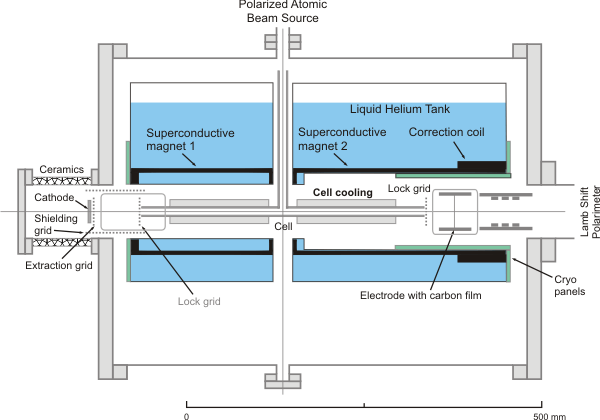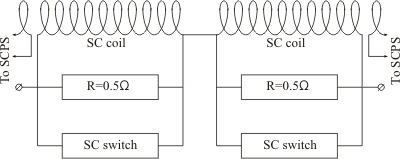Introduction
Magnetic field in CELGAS experiment (Fig. 1) is used for guiding electrons and ions along the storage cell. This field is generated by two superconductive coils that allow producing up to 2 T field at 100 A current. The use of the superconducting coils is subject to the risk of quenching, i.e. a large amount of heat is dissipated damaging or even completely destroying the coils. Special power supply (SCPS – Superconductive Coils Power Supply) was designed and built to provide stable current up to 200 A and protect coils in case of quenching.

Fig. 1. CELGAS experimental setuplayout.
Superconductive coils are connected serially to current supply. Each of them has superconductive switch that could close the current loop with the coil. Thus current could be frozen in the each particular coil (Fig. 2). Besides, every coil is equipped by a 0.5 O resistor mounted on the coil side to protect the coil from blowing up during quenching. Most of the energy frozen in the coil dissipates in this resistor during transition of the superconducting coils to normal state. Coupler loop is installed at the end of every coil to provide quenching signal for protection circuit of the power supply.

Fig. 2. SC coils connection schematic.
SCPS was designed to supply two coils with the same current, but the working currents in the coils could be frozen different. Protection loop for each coil is separate. In case of quenching of the coils power supply breaks the superconductive loop by heating of superconductive switch and connects external ballast resistor to suppress heat release in the helium vessel. The current supply must have intelligent current control algorithms to inject required current to flow coupled coils because any change of current in one of these coils affects the current in the others.